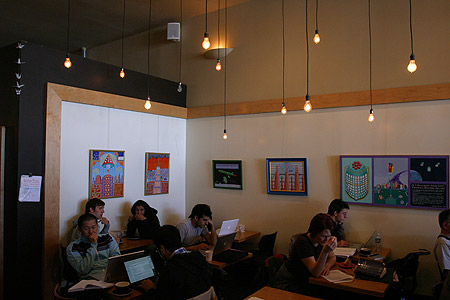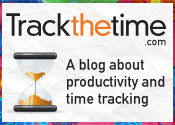Donât Multitask
Wednesday, December 31st, 2008by Chris Tingom
I know you’ve seen hundreds of productivity articles and books. So here’s one simple new years resolution: Stop multitasking.

I’ll say it again: STOP MULTITASKING.
Some people even think that multitasking makes us stupid.
Find ways to focus on your work and create large uninterrupted blocks of time where you can actually get your work done.
“Decades of research (not to mention common sense) indicate that the quality of one’s output and depth of thought deteriorate as one attends to ever more tasks.” — Time Magazine
Don’t multitask any more. Just don’t.
It isn’t efficient, and I’m betting that deep down you really know it.
Stop letting other people control how productive you are every day. Limit your distractions and effectively manage deadlines with your customers so you can focus.
Whenever Iâm inundated with, say, 10 tasks I become overwhelmed and try to work on each of them. Some days I just say âtoday Iâm going to just work on this project and nothing else.â I tend to put my headphones on, turn up the tunes and delve into my project. I get it done, and then the next day I can focus again because it is one less thing to work on.
When you’re constantly shifting gears throughout the day from one thing to another it effectively prevents your ability to focus. And when you focus you can probably do your best work.
This year, do your best to work on just one thing at a time.
How are you going to do this? Here are some tips to get you started:
- Instead of accepting deadlines for a specific day, accept your deadlines for a specific week. That gives you some breathing room so life doesnât have to be so chaotic.
- Break your day into two or three blocks of time (or even one!). Set a goal to have a certain goal accomplished by a certain time.
- Only check email and return phone calls at a certain time every day (some people suggest twice a day).
- Instead of a to-do list with a dozen task. Pick one-thing that must be done TODAY. Then do it!
- Turn all of your to-do lists into schedules. A to-do list without a time line is just one more thing to think about.
- Find your most productive part of the day (such as your mornings) and always plan to use it for your thinking work. Do your best to avoid distractions during this time, then if the rest of the day is a “loss” at least you have your mornings.
- If deadlines are pressuring you, then fix that. Get every customer on a deadline (or a soft deadline).
- Limit Interruptions.
That’s all for today! I have a million things to do! đ

 The benefits to this are that in the long run you’ll have made more decisions than you would have normally and you’ll have the benefit of quick decisions — something that allows you to move on and use your brain power for something else.
The benefits to this are that in the long run you’ll have made more decisions than you would have normally and you’ll have the benefit of quick decisions — something that allows you to move on and use your brain power for something else.
 Notice the title of this entry. Itâs not about how to be productive. Anyone can be productive, if they so desire, every now and again, sometimes on purpose, sometimes not. My objective is to show you how to stay productive once you get there.
Notice the title of this entry. Itâs not about how to be productive. Anyone can be productive, if they so desire, every now and again, sometimes on purpose, sometimes not. My objective is to show you how to stay productive once you get there.

 It sounds awful even just writing all that! Actually, the obsession with âI personallyâ is ultimately I think the completely wrong attitude when it comes to growing a company, but thatâs the topic of another post Iâve been germinating lately.
It sounds awful even just writing all that! Actually, the obsession with âI personallyâ is ultimately I think the completely wrong attitude when it comes to growing a company, but thatâs the topic of another post Iâve been germinating lately.





 Tornado Design
Tornado Design Minuteglass
Minuteglass Track The Time Blog
Track The Time Blog